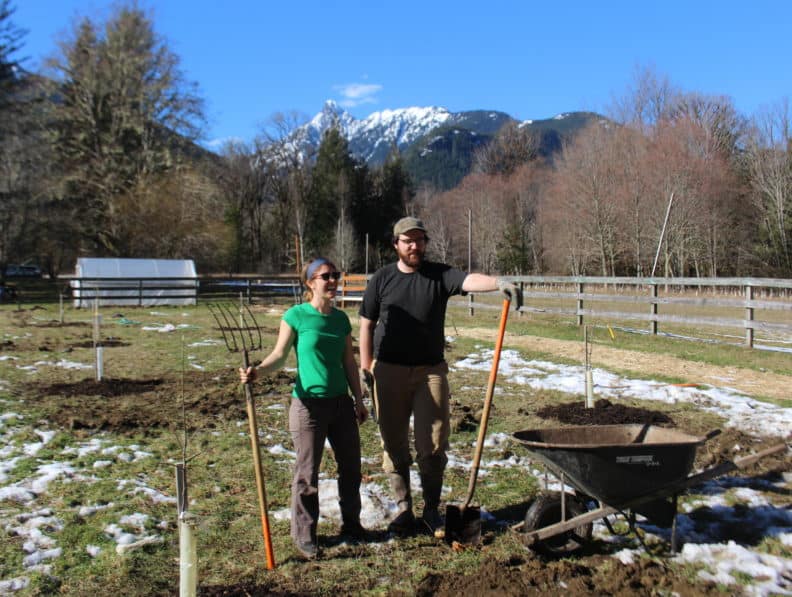
A Garden in the Mountains
This post is a guest contribution by graduate student Tanner Johnson, who is also one of the Confluence Garden Managers for 2017-18.
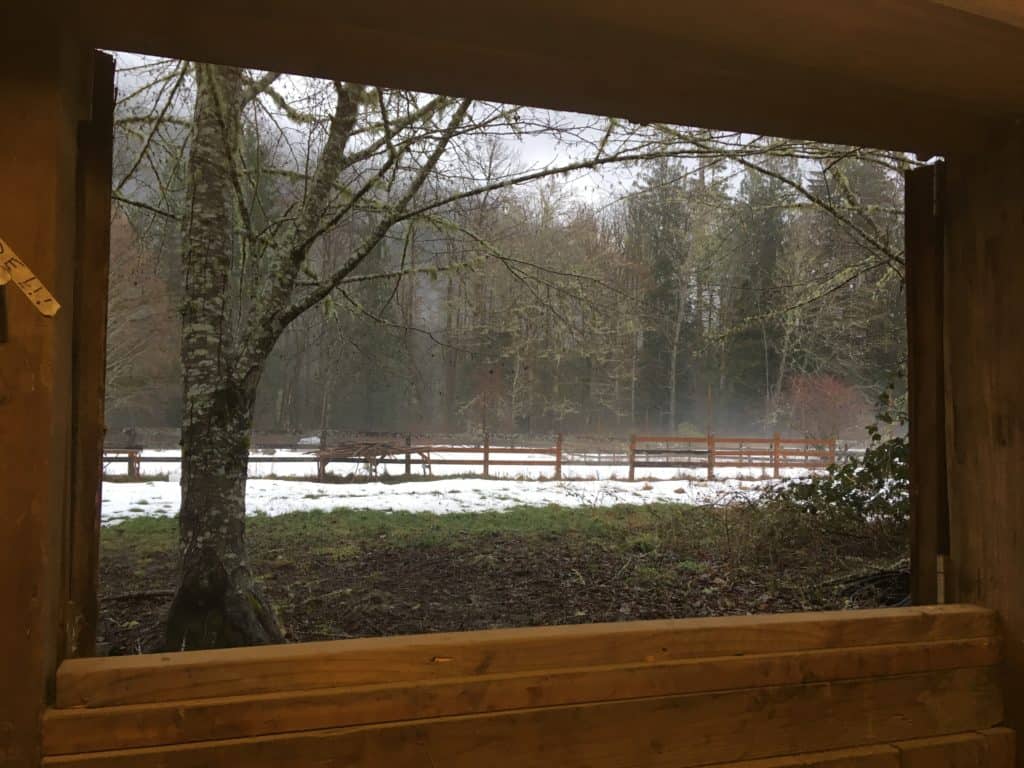
Pushing up through the remnants of a harrowing snow storm, I spotted the first signs of spring. Just off the edge of the porch I noticed a cluster of Snowdrops (Galanthus nivalis) stretching towards the bright sunlight with bowed heads. Buds were breaking on the Indian Plum (Oemleria cerasiformis) by the path to the river, foreshadowing the reawakening of all of the forest flora. This day of sun is something I have been looking forward to for some time; even though I often boast of my natural resistance to seasonal affective disorder, the long dark days of winter in the Pacific Northwest inevitably have an effect on everyone. But my excitement for this day was twofold: it was time to be outside without a winter parka, and time that I got my hands dirty again.
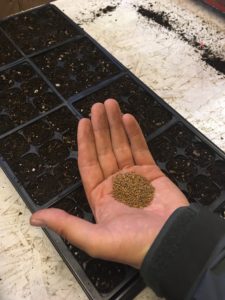
Gardening in the mountains is new for me, and much of what I know about timing of seasons has been challenged, forcing me to rethink how I plan a garden. Mountains are notoriously unpredictable, and the weather in the foothills where the Confluence Garden at the Blue House is no exception. The sun is fleeting, and the days during which the soil is dry enough to work are few and far between. Luckily, on Sunday March 11th, the clouds broke long enough to complete a project that has been in the works for some time.
On a clear, brisk winter’s day I was spreading bark chips in the Confluence Garden, making pathways around beds and contemplating the concept of legacy. How has the hard work of those who came before influenced the design and functionality of the Confluence Garden? Upon whose shoulders do we stand? How might we work to create a continuing legacy of care for this space? Suddenly, I was standing in a space formerly occupied by two long garden beds. The space had long since gone fallow, and was a sort of blank spot in the garden. That’s when it came to me, the space was perfect for a small orchard. Excited at the prospect of an early garden project, I conferred with my co-manager, Darcy, and we came to the agreement that we should plant an orchard as a symbolic representation of the legacy left on the Confluence Garden by Lindsey Macdonald, our Graduate Program Coordinator.
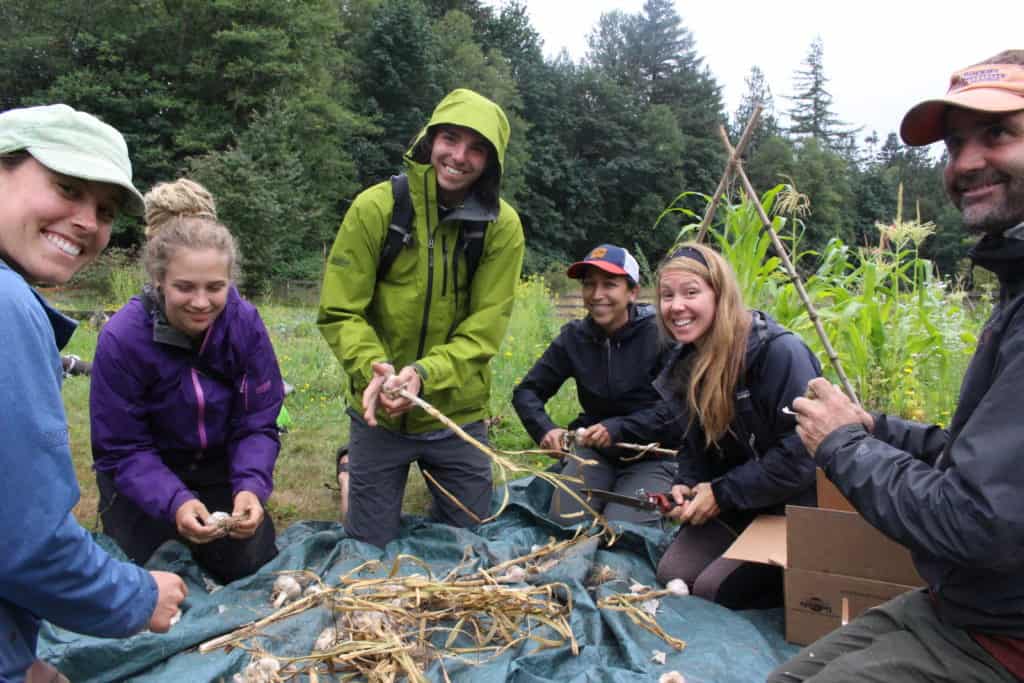
Lindsey was one of the biggest advocates for the creation and integration of the Confluence Garden into the North Cascades Institute’s programmatic structure. She put in countless hours in the Confluence Garden, and supervised the graduate student work study positions that are the backbone of the garden. Lindsey contributed incredible vision, leadership, and dedication in the garden these past 3 years, not to mention hard physical labor and hours of work outside of her paid position. We gathered at the Blue House in Marblemount for stewardship projects in the garden and honored Lindsey for her contribution to starting this Confluence Garden. An orchard that bears fruit for future generations that we do not immediately benefit from seems an apt metaphor for Lindsey’s contribution the Confluence Garden and her devotion to sustainability and larger systems thinking.
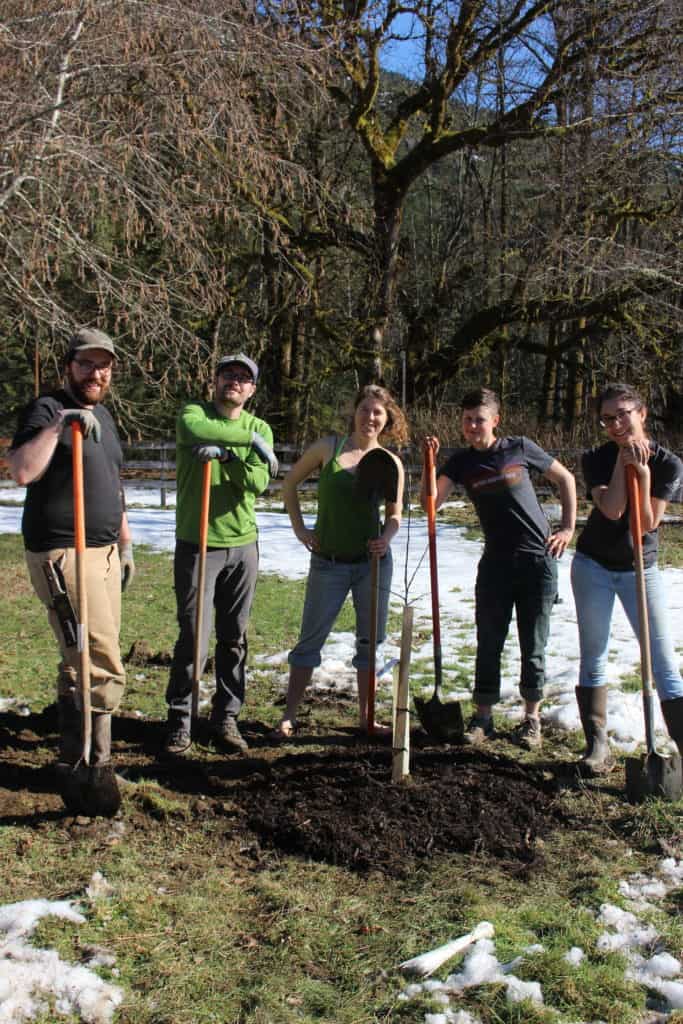
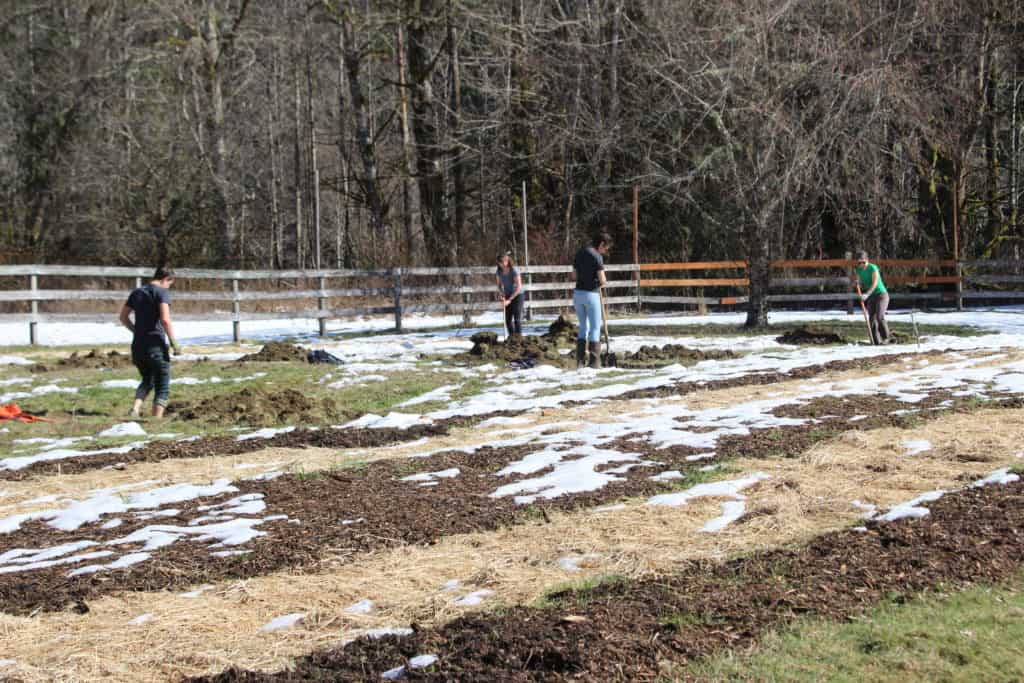
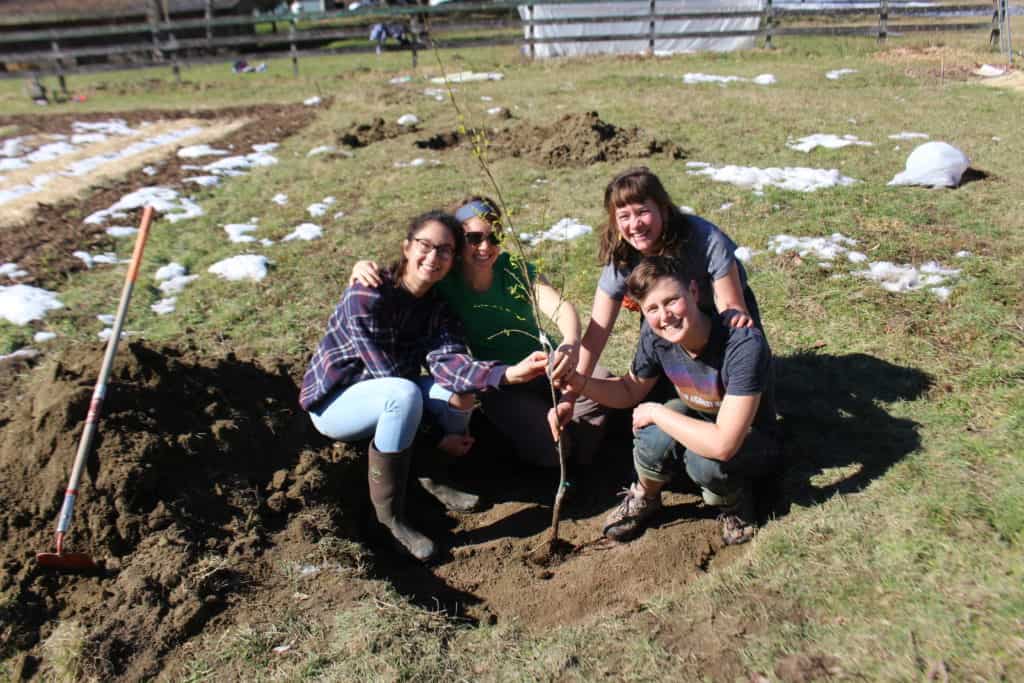
We planted a mix of Apple (Malus pumila), Pear (Pyrus communis), Japanese Plum (Eriobotrya japonica) and Persimmon (Diospyros kaki) trees in the Lindsey Legacy Orchard to honor and recognize her hard work in creating this garden and her contributions to our foodshed program.
As the days get longer, and the rainy wet days more sparse, I look forward to clear mornings amidst dewey grass, my hands smelling of freshly dug soil. Planning and maintaining a garden can seem like a huge logistical chore when you are cooped up inside, but when you really get down to it, growing food can be as unpredictable as the weather in the mountains. Each growing season brings new challenges and opportunities for learning, and this season will be no exception. I think that is why I am drawn to gardening – it is so humbling to work with Earth and to put yourself at the mercy of the dynamic patterns of change inherent in the cultivation of plants. There is so much learning yet to come.
~ Tanner Johnson

